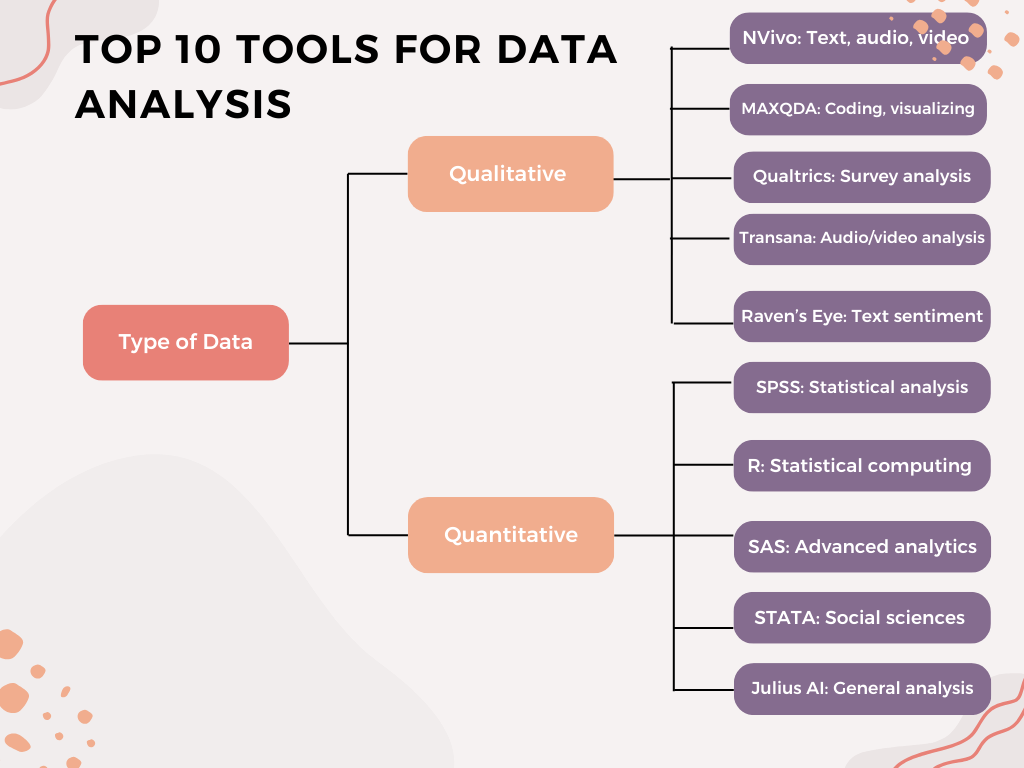
In the fast-evolving field of research, having access to efficient and powerful data analysis tools is paramount. Whether you’re a seasoned academic or a budding data scientist, knowing which tools best suit your research needs can make a significant difference in your workflow and output. This blog post delves into the top 10 data analysis tools, segmented into quantitative and qualitative categories, to help you navigate the plethora of options available.
Quantitative research requires precision, scalability, and the ability to handle large datasets. Here are five tools that stand out for their robustness and versatility:
Qualitative research explores the depth and complexity of data through detailed analysis, which requires tools adept at handling unstructured information. Here are five qualitative tools that are essential for qualitative researchers:
Choosing the right tool for your data analysis needs can dramatically enhance the quality and efficiency of your research. Whether you require detailed statistical analysis or deep qualitative insights, the tools listed above provide a range of functionalities that cater to various research demands. By integrating these tools into your research practices, you can streamline your processes, enhance accuracy, and ultimately produce more impactful results.

Dr. Chopra is the founder and editor of thephdcoaches.blogs and Thephdcoaches Learn more about her here and connect with her on Instagram, Facebook and LinkedIn.
Dr. Tripti Chopra, founder of The PhD Coach, is an award-winning mentor and leader in integrating AI into academic research, with over a decade of experience guiding PhD students and researchers. Her work revolutionizes research processes, promotes sustainable writing practices, and inspires scholars to embrace technological advancements.
Copyright© 2023 Thephdcoach All rights reserved.
Leave a Comment